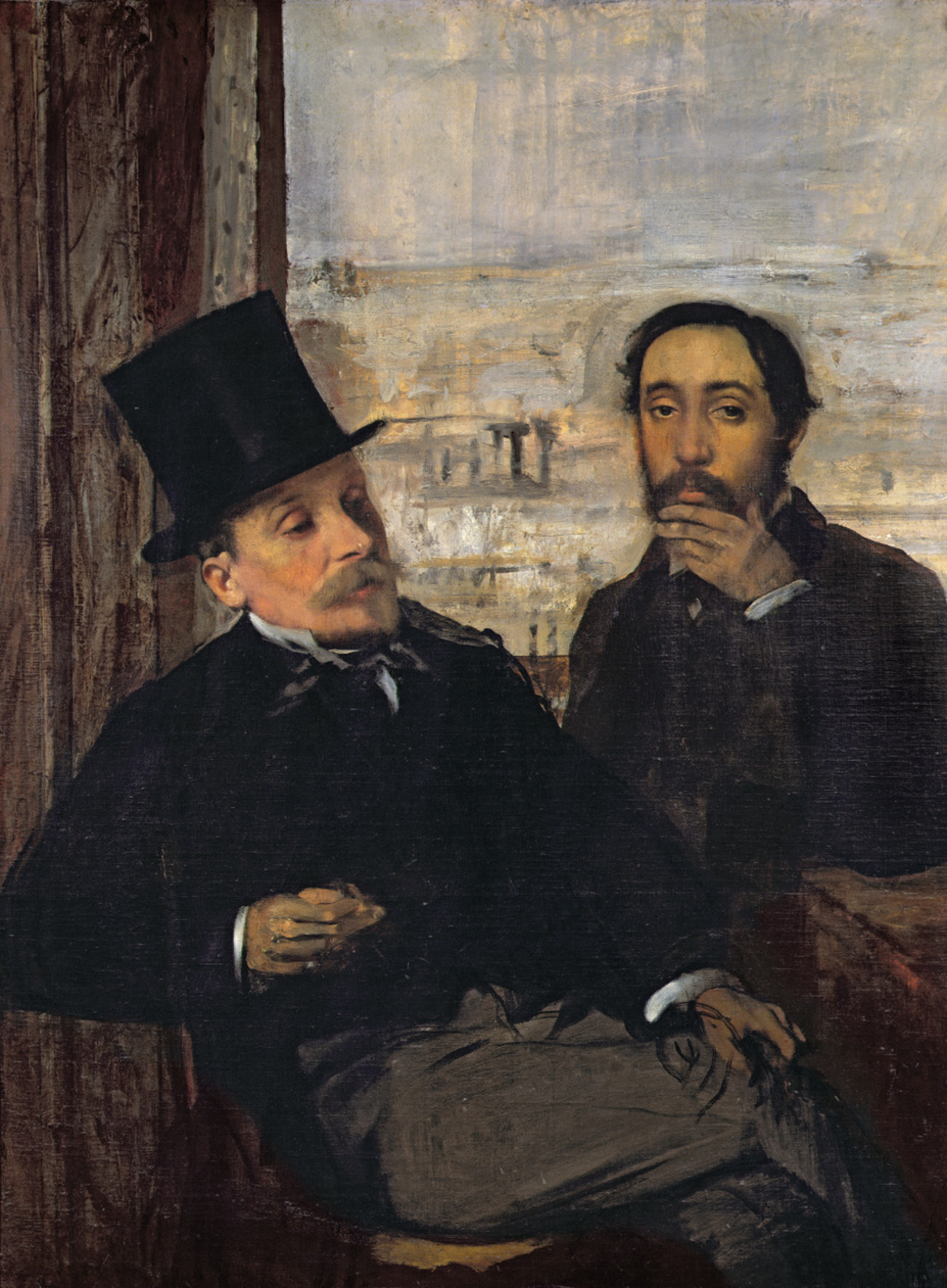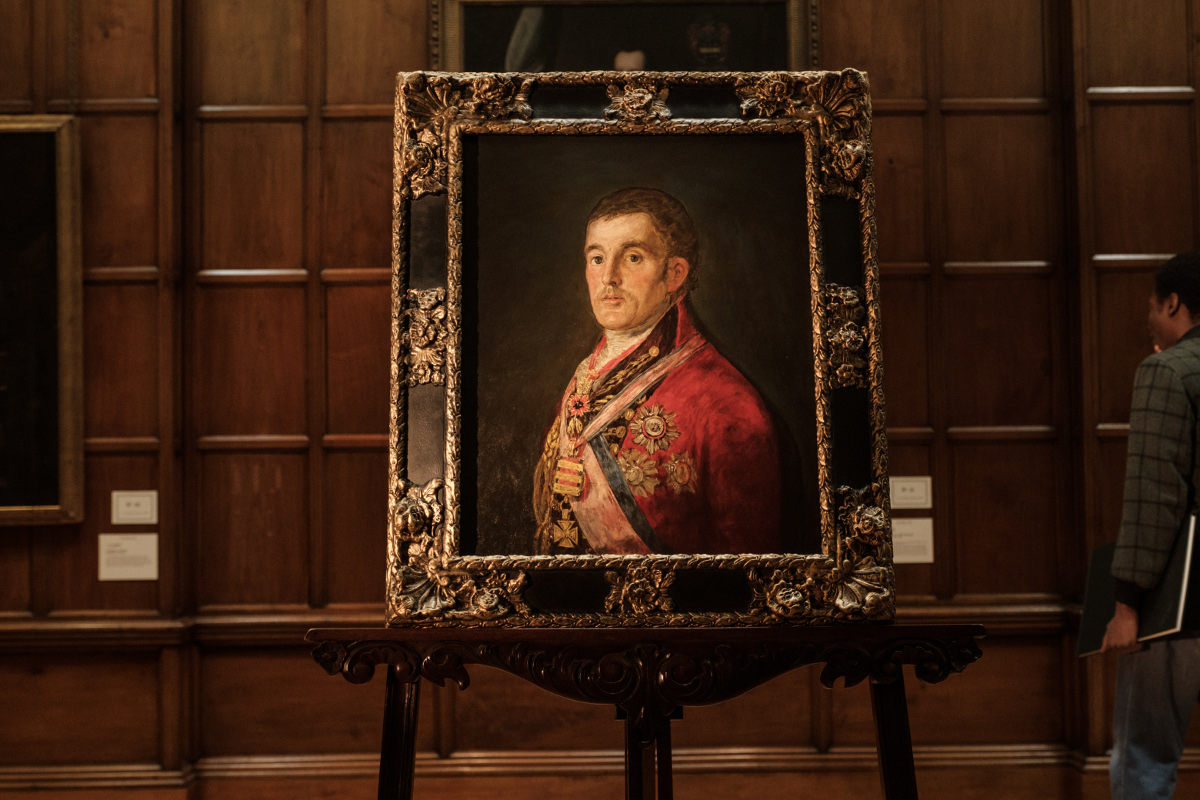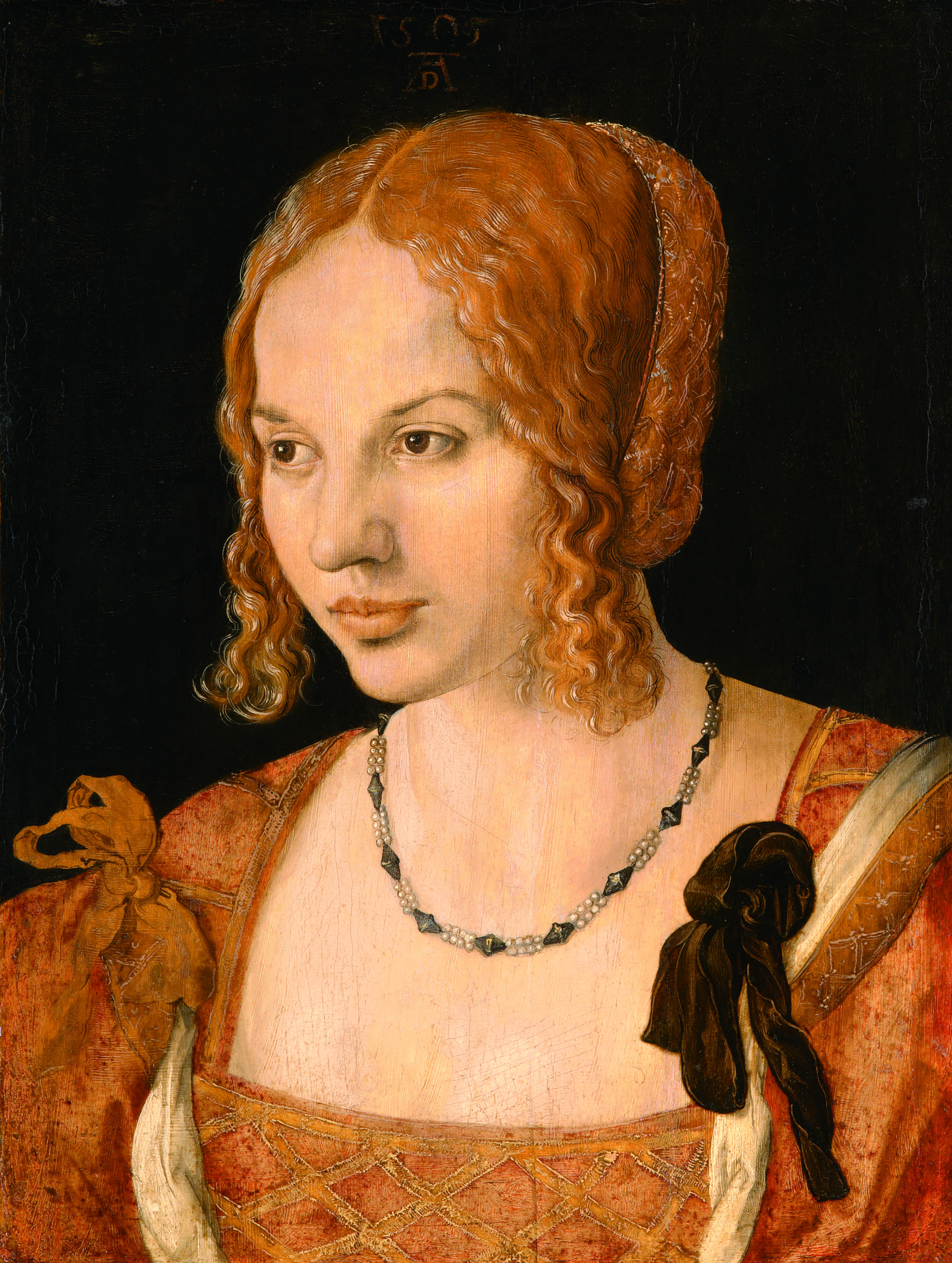With his restless existence, the loose brushstroke, the spirit of adventure akin to that of the impetuous Caravaggio, Parmigianino conceived monumental figures imbued with psychological implications, at the center of a dazzling painting.
The eccentric painter obsessed with drawing, a transversal artist who managed to give the faces the intensity of Goya’s feminine gazes and the photographic pose of the later painting will be the great protagonist of the week on the small screen.
From Goya and Degas to the mysteries of Daunia, a land far from the most touristic routes, beaten with passion by the archaeologist Andrea Angelucci, here are some appointments not to be missed on TV in the week that has just begun.

Edgar Degas, Self-portrait with Evariste de Valernes1864, Paris, Musée d’Orsay
On Sky Arte Parmigianino and Goya
Described by friends as a brilliant man capable of arousing joy, but also terror, in those around him, Edgar Degas was known for the obsessive reworking of his works. A mania that, on many occasions, even led him to ask clients to get his paintings back in order to be able to further retouch them even after having delivered them. Let’s rediscover this artist thanks to the docufilm Degas-Passion and perfection, broadcast on Wednesday 9 November at 12.50 on Sky Arte, an artistic gallop between horses and jockeys, dancers, nudes of women caught in daily activities, and even wax works “from the terrible reality”. Above all, the search for movement and the obsessive intent to grasp the instantaneousness of the present.
On Thursday 10 November at 9.15 pm a first vision instead guides us in the second season of Sky dedicated to Great masters of painting. We thus enter the fascinating universe of Parmigianino, one of the most interesting and disruptive personalities of the Italian sixteenth century. Anticlassic by definition, Girolamo Francesco Maria Mazzola, a point of reference for all those artists who, in the sixteenth century, were looking for new codes and an alternative way of painting, is told on the small screen through Paolo Cova, professor of Art History, and Marcella Culatti , art historian. Get ready for a journey among the frescoes of the first and second left chapel of San Giovanni Evangelista in Parma, among those in Rocca Sanvitale (Fontanellato) and among the various portraits and self-portraits of the artist.
On Friday 11 November we ideally reach the halls of the National Gallery in London to rediscover the acclaimed exhibition Goya: the Portraits, led by the first curator Xavier Bray. David Bickerstaff’s film, Goya – Visions of flesh and blood unveils the dramatic life and extraordinary art of the Spanish master by returning to the public a compelling portrait of the painter through opinions of international experts, masterpieces drawn from world-renowned collections and visits to the places where the artist lived and worked. The film also opens the doors of the Prado National Museum in Madrid, the casket of a series of important works such as The family of Charles IVproviding rare access to Goya’s “Italian Notebook”, a sketchbook made in Italy between 1769-1771, which puts viewers face to face with the Spanish artist’s most intimate reflections.

Francisco Goya, The Duke of Wellington, 1812-14, Oil on mahogany, 64.3 x 52.4 cm, London, National Gallery
On Rai 5 among the mysteries of the Daunia
Rai 5’s Wednesday rhymes with Art Rider. On 9 November at 9.15 pm the third episode of the format in search of the lesser known art places in Italy, conducted by the young and dynamic archaeologist Andrea Angelucci, a GA&A Productions production, in collaboration with Rai Cultura, takes us from Manfredonia to Venosa. Andrea will open to the spectators the doors of the Daunia, an area that extends from Puglia to the border with Basilicata and Campania, a mysterious land, far from the most touristic routes.
On Arte tv Albrecht Dürer and the mystery of self-portraits
A precociously talented painter, Albrecht Dürer was born in 1471 in Nuremberg, the “heart” of the Holy Roman Empire. At the age of 13, with the help of a convex mirror, he painted his first self-portrait, at 15 he left his father’s goldsmith’s workshop to enter the studio of the painter Michael Wolgemut. With the passion for engraving in his pocket, a technique developed fifty years earlier and which will favor the diffusion of his works, the artist spent long stays in Basel and Venice, occasions that allowed him to study perspective and the masters of the fifteenth century. Albrecht Dürer: the mystery of self-portraitsbroadcast on Arte tv is a journey through 12 self-portraits that retrace the career of the German painter, celebrating his genius.

Albrecht Dürer Half-length portrait of a young Venetian, 1505, oil on panel, cm. 32.5×24.2. Lender: Vienna, Kunsthistorisches Museum

